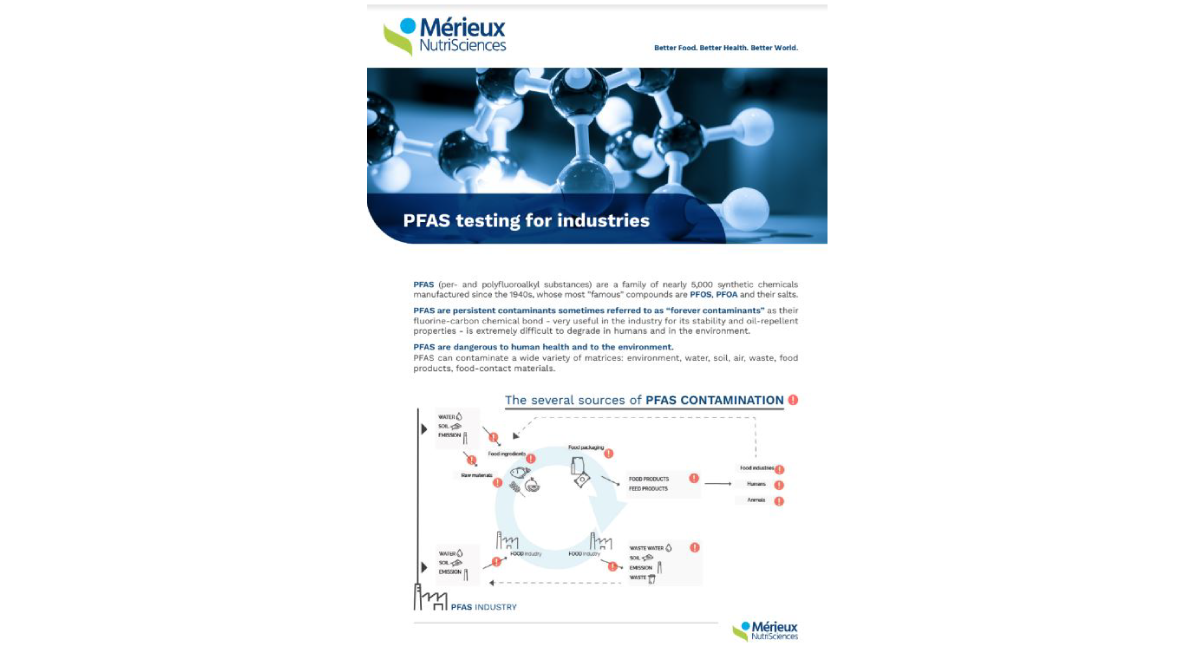Understanding PFAS Risks
Per- and Polyfluoroalkyl Substances (PFASs), hydrophobic and lipophobic fluorinated compounds, find widespread use across various sectors:
- Stain- and water-resistant coatings for fabrics and carpets.
- Oil-resistant coatings for food-contact paper products (cookie sheets, food paper, fast food packaging, popcorn bags, etc.).
- Fire-fighting foams, mining and oil well surfactants, floor polishes, and insecticide formulations.
Perfluorooctanesulfonic acid (PFOS) and Perfluorooctanoic acid (PFOA) are notable PFASs, categorized as (per)fluorinated organic surfactants and recognized as endocrine disruptors.
Health Risks & Environmental Impact
Evidence suggests their potential health hazards, with PFOA classified as a Group 2B carcinogen by the IARC, indicating probable carcinogenicity in animals and possible carcinogenicity in humans.
PFAS contamination, a pressing concern due to their persistence in the environment, remains a global issue. These compounds endure without degrading when exposed to air, water, or sunlight, allowing them to spread over long distances and accumulate in organisms, including humans.
PFAS Contamination Pathways
Because of chemical stability they can run long distances through the air, thus contaminating sites far away from the production plants and affecting living organisms where they may bioaccumulate.
EPA, United States Environmental Protection Agency
The aquatic environment faces significant PFAS contamination, as seen in Italy’s 2013 PFAS alert, attributed to industrial discharges. PFASs’ presence in water sources underscores the need for thorough research to assess human health risks.
PFAS-related environmental pollution is the main cause of food contamination, which is in turn the main vehicle for human exposure to PFASs.
Major contributors to dietary exposure are:
- Fish and seafood (mainly from fresh water)
- Fruits and fruit products (PFOS occurrence)
- Meat and meat products (edible offal and liver in particular)
Food packaging and cookware can also introduce PFAS contamination into food. Studies have verified the presence of PFASs in food packaging, particularly in fast food containers requiring oil-resistant coatings.
Growing Concerns & Awareness
The prevalence of PFAS contamination in water, food, and food packaging raises significant concerns among consumers, especially since comprehensive scientific studies assessing potential health risks are still ongoing.
Despite the ongoing research and the absence of unified legislation, global awareness of PFAS risks continues to grow:
- PFOS is classified as a “persistent organic pollutant” (POP).
- PFOA and its ammonium salt content are labeled as “substances of very high concern” (SVHC).
- The EFSA has issued various scientific opinions on per- and polyfluoroalkyl substances, advocating for their monitoring and further investigation into their effects on human health.
Mérieux NutriSciences offers comprehensive PFAS analysis services for water, food, and food packaging using advanced LC/ESI-MS/MS methods. Compliance with local regulations ensures accurate and reliable results.
PFAS in Food & Food Packaging
For food and food packaging, Mérieux NutriSciences utilizes specific isotopically-labeled standards for each PFAS analyzed, adhering to quantification limits that comply with guidelines and national laws.
PFAS in Food
In the realm of food, there exists no harmonized European legislation for PFASs, nor are there official concentration limits. However, the 2010 European Recommendation (2010/161/EU) mandates Member States to provide data on PFASs in food using chromatographic methods and a Limit of Quantification (LoQ) in food set at 1 µg/Kg, a requirement to which Mérieux NutriSciences adheres.
PFAS in Food Packaging
Official migration limits for PFASs present in food contact materials have not yet been defined. The EU Framework Regulation 1935/2004 serves as the sole legal framework. Article 3 stipulates that packaging materials and articles must be manufactured in a manner that prevents the transfer of their constituents to food in amounts that could pose a risk to human health. Thus, monitoring the presence of PFASs in food packaging remains crucial.
PFAS in Water
Mérieux Nutrisciences analyses PFAS with international and in-house methods in water for human use, process water, groundwater.
For drinking water, the harmonised reference in Europe is Directive 2020/2184, which includes PFAS: we developed specific testing profiles for water for human consumption, in line with the requirements of this legislation.
It is also possible to add to the analytical plan – upon request – specific analyses on other parameters included in local laws (Member States transpositions of the Directive).
Contact our experts to get more info on our PFAS detection services:



